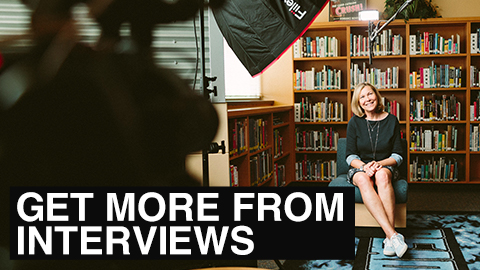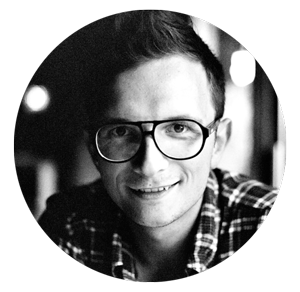10 ways for filmmakers, directors and producers to get the most out of documentary style interviews
Getting the most out of your talent can be a tricky business. Hearing real stories, from people in their own words is still one of the most compelling narrative forms for onscreen content, whether it's a brand story, a charity case study or campaign film. However, it's not always as easy and simple as it sounds. With a camera thrust into your face, people scrutinising your appearance and potentially a preconceived notion of what you want to say, delivering your story in your own words in a comprehensible fashion can be intimidating and challenging.
In this article I thought I'd take a step back from my thirteen odd years in the business and share some of the techniques that as a freelance filmmaker, I use to help craft better onscreen interviews with my contributors.
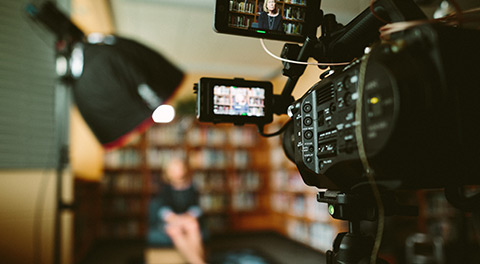
Photo by Sam McGhee on Unsplash
Understand the narrative
Before you even arrive on location, it's your job to do your due diligence to the story. You need to understand what the narrative is. You need to have an understanding of who your hero is. You need to know how this impacts on the key points you're trying to tell, whether that's a brand story, a case study or a documentary piece.
To help with this, a phone call with the contributor can really help. You get to find out about them and their story in their own words. You start building a relationship with them. You begin to break down boundaries and allay their fears with regards to being on camera. Also, this can be great to figure out logistics. What locations can we film in? Are there any family members that would be happy to get involved with some B-Roll shots? This is your opportunity to demonstrate that you're approachable and friendly, and you're going to support them to be captured in the best light you can.
From this, you can draw up a list of questions you want to ask on the day.
Construct your questions
To construct your questions, think about your narrative. What story are you trying to tell? Are you simply trying to capture someone’s organic experience or do you have a specific storyboard you need to adhere to? If I know the story I want to tell, then creating a (written) storyboard can be really handy to figure out what questions I need to ask.
Here are a few pointers to get started...
- Avoid questions that are likely to lead to one word answers. You want to ask open ended questions that will lead to full, detailed answers. For example, DON'T: Do you enjoy your work here? DO: Why do you enjoy your work here?
- If there is specific content you want to try and capture, make notes after the question to remind yourself for during the interview
- Write questions that include specific detail, if that's what you need. Don't assume your talent will include specific detail in their answers automatically. By including it in the question, it can prompt contributors to mention it. For example: Your work includes talking to customers and ensuring they're happy, for the camera, what does your job role entail?
- Don't be afraid of asking multiple questions at once, if you're looking for abbreviated and concise answers. For example: Tell me about this new initiative and how it's going to impact customers directly?
- For more human focused answers, ask questions that will get them talking about their feelings and not just the facts. Write questions that will generate an emotional response.
- If you want to prompt a particular answer, include it in your question. For example: How does it feel to be a part of this initiative? Pleased, proud, honoured?
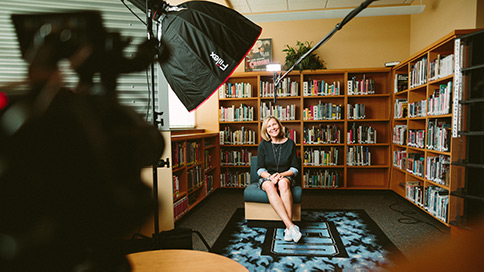
Photo by Sam McGhee on Unsplash
Arrive on location and get to know your talent
When you arrive on location, give yourself time to get to know your contributor. If you're working alone as a shooting PD or even as part of a small team, there's often lots of things that need to get done... loading kit in, setting the camera up, building lights, etc... before you can begin shooting. It's quite easy to get side-tracked by all of that. When I arrive on location, I'll often take five minutes out before I load any kit in to say hello to my contributor. Get to know them. Accept a cup of tea. Give them a chance to see you as unthreatening. Then look at locations and figure out what kit you need. Continue to make them feel at ease as you set things up. Try to keep them engaged in conversation and not focused on all these alien gadgets and gizmos that have just been loaded into their front room. Essentially, relaxed contributors will give you better content.
Be aware that if you are doing this as a shooting PD alone or with an assistant, you need to fully understand your kit. You need to be able to assemble it with your eyes closed. I've certainly fallen victim to this in the past. I've tried to talk with a contributor but I'm unable to multitask and fully listen to what they're telling me, as I'm busy trying to figure out where the XLR cables should be plugged into and what channel the radio mic should be set to. To help with this, I like to pre-rig as much kit as I can before I set off. I'll ensure my cards are formatted, my tech-specs are adhered to and my microphones have been line checked. This means when I get to location, I just need to focus on the simple things.
Let your talent see you set up
How often has someone walked into a room full of camera gear that's set up and said, "Oh, that's a lot of equipment!"? It's intimidating. One way around this is to allow your contributor to see you setting up. If they see you putting lights up one by one, setting the boom up, setting tripods out... it's much more gradual and doesn't seem as intimidating as walking straight into a room full of kit with lights blaring. This will hopefully help reduce their nerves and relax them.
Brief your contributor
Before you start shooting, tell your contributor what you're going to do. A few pointers I include in my brief:
- I like to ask them to include my question in the answer, for more concise soundbites (don't be afraid to remind them of this as you're asking questions - some people get it very naturally, other people need a bit of coaching).
- Explain that this is not live TV, it's a pre-record. If they'd like to stop and think or restart an answer, that's absolutely fine.
- Remind them of any key points you'd like them to include or mention.
- Ask if they have any questions and allay any fears they may have.
Sit in and setup
Get your talent to sit in and spend some time making sure you're happy with everything. Sometimes I'll do this early on as I'm chatting with the contributor. It gets them more comfortable with the setup. Ensure the lighting is how you want it - it's never great readjusting this halfway through a shoot.
I'll also tell the contributor if I think they need to adjust their appearance; bit of hair sticking up, tie at an angle, etc. I also carry a make-up kit too, with shine remover. You can build trust with the contributor if they can see you care about how they look on camera. A lot of the fear associated with being filmed lies in people feeling exposed or ridiculed. When people realise that you're there to work with them and show them in their best light rather than against them, they'll start to relax.
Then take stock of who's in the room and whether you need to ask anyone to leave. It can be hard for a contributor to fully commit to an interview if there's someone else they know in the room. I've had this many times when trying to interview someone about their job in an office full of colleagues.
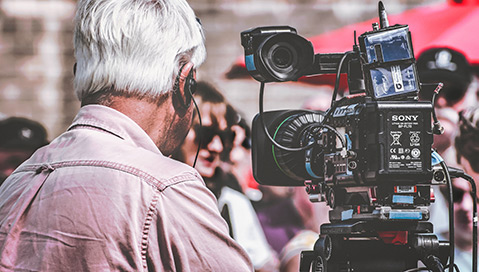
Photo by K. Mitch Hodge on Unsplash
Roll camera
I recommend rolling on the camera as soon as the interviewee sits in. In the past, I've captured some great natural footage as contributors prepare themselves for the interview. With good editing, these shots can be peppered throughout the edit to inject energy into the film.
Start the questioning
You've now laid the groundwork and hopefully you've built a rapport with your talent. Here are few guiding points I find help me with getting the most out of my interviews:
- I like to take the interview gradually. It tends to take people a while to warm-up before they give you a true representation of themselves. Questions like who are you and what do you do tend to work well to start with. Never start with difficult or convoluted questions or something that's integral to the story.
- Make notes as you're going along of questions you think you may need to revisit. Sometimes I find getting through my list of questions first and then revisiting the answers that need a bit of work, is better than trying to get the perfect answer the first time round.
- Be sure to offer guidance on the type of answer you're looking for if the contributor is unsure of how to answer something, but avoid putting words into their mouths. Other people’s words will be very hard for them to recite naturally. It's your job to use your questioning skills to get them to tell the story naturally in the way you want.
- If you don't get the answer you're after the first time around, try asking the question in a different way. People won't necessarily remember the previous question but may think about the subject from a different angle.
- If you're struggling to break the ice with the contributor, move on to a different part of the interview.I often find it can be helpful to talk about their passions, areas in which they are experts or shared interests to build more of a connection. This can be the turning point in an interview and they will begin to let their guard down and relax.
- Don't be afraid of staying silent if you want your contributor to divulge more. Humans have this innate inability to cope with awkward silence in conversation, and will often carry on talking to avoid that.
- Don't break the flow of your contributor. Don't stop them halfway to agree with them. Give them space and let them talk as much as they want. Use the time they're answering a question to glance down at your next question, to avoid breaking the flow of dialogue.
- If you want a concise, short answer, give them an opportunity to answer in full and get all their thoughts to the front of their brain. If you then say, "I'm going to repeat that question and would you mind giving me a concise version of that," you'll generally get a much shorter and concise version of the story.
- Re-assure but don't patronise.
- And finally, I always like to end an interview or even part of an interview, with, "And is there anything else you'd like to add?". Nine times out of ten, this answer will make the cut and often will be the best content of the whole interview. This gives the contributor an opportunity to talk openly, honestly and passionately.
A couple of other talking points worth mentioning... Be aware that certain people may not get the opportunity to talk candidly about their situation otherwise. You may generate an emotional response. Respect that and give people time to process their feelings. Accept that in talking to you, they may be coming to terms with the situation. Give them to space to cry if that's what they need. This can be somewhat uncomfortable, but once they've dealt with their emotions and gathered themselves together, they can continue with the story.
Be aware of the content you're capturing. Think of how it will work in the edit. Sometimes, I'll have a great chat on camera with a case-study, get to the edit and realise there's nothing to tie it all together. You need to be aware of this in the capture stage and if an answer won't work in the context it was given, ask the question again and say, "That was great, but would you mind including this?".
B-Roll and additional content
Thinking of this interview in the context of your edit, what else do you need to make the dialogue work? B-Roll, and as much of it as possible, is essential. It can be tough trying to come up with ideas on the spot but things I'll often go for include:
- jobs around the house - washing up, making tea, gardening, etc...
- going for a walk around a park
- family interaction
- hero shots - these always work well at 100fps on a fast lens
- macro shots - feet, hands, facial features...
- non-syncs (abstract shots of the interview that can be placed anywhere in the edit to cover up edits)
It's also worth keeping the interviewee mic'd up for this and asking a few questions as the go. Some of the best interviews I've seen have been when people are driving. Sometimes things that are just being shot for B-Roll shots, end up being great supporting dialogue.
Have fun, enjoy the conversation and be compassionate
I think the most important thing is to enjoy what you're doing, capture great content but also to be willing to be supportive when someone needs it.
I love finishing an interview and hearing from my interviewees: "That wasn't that bad, was it!". I think it sums up well how writing good questions, listening to what's being said and giving a contributor space to answer, can turn dreaded on camera interviews into an enjoyable experience for both sides.
So these are my 10 top-tips from over a decade's worth of experience as a freelance filmmaker, but what are yours? Let me know in the comments section below if you have anything to add.
Looking for a freelance filmmaker for a future project? Checkout my portfolio here.
